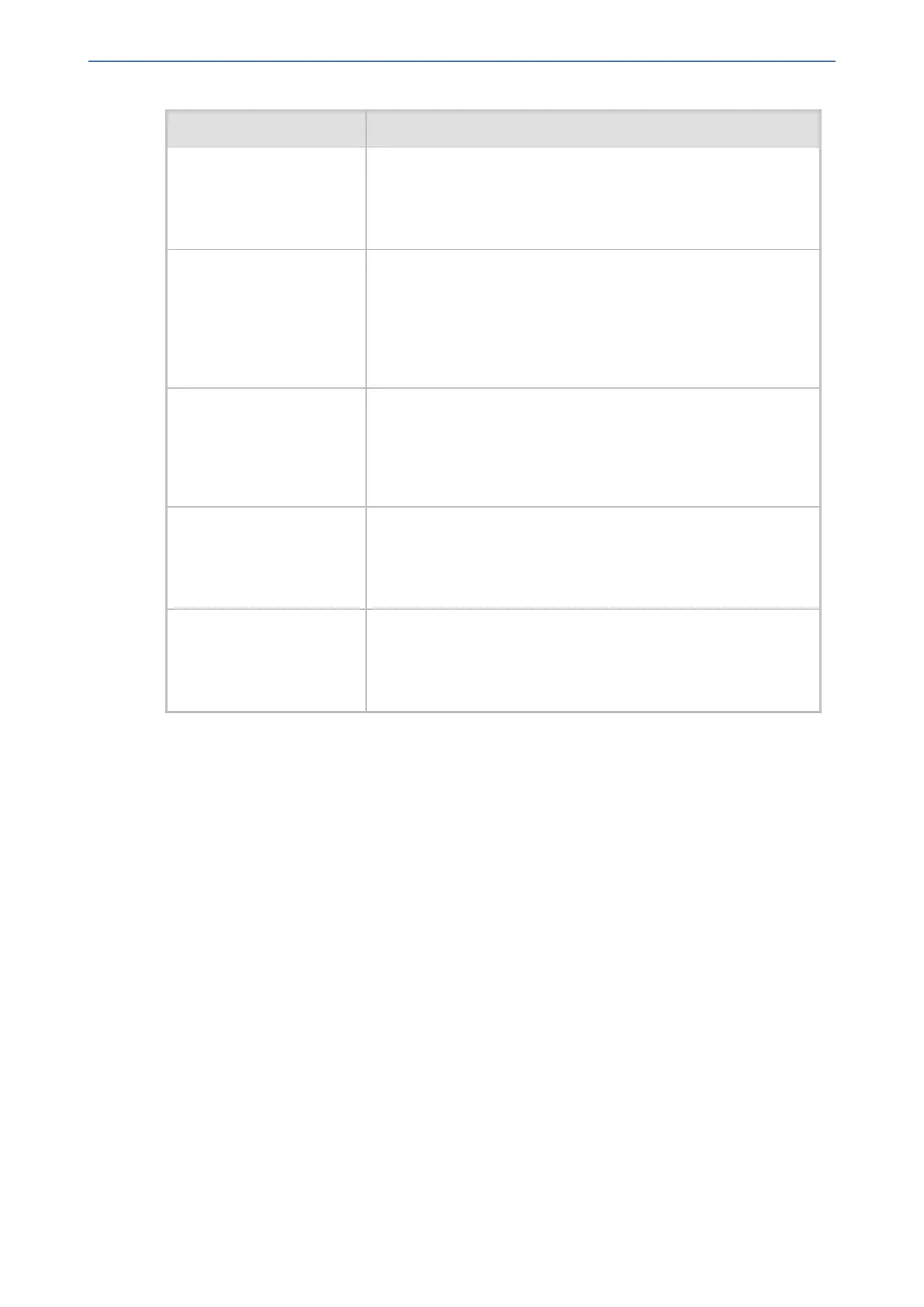CHAPTER35 SBC Manipulations
Mediant 1000 Gateway & E-SBC | User's Manual
'Remove From Left'
remove-from-left
[IPInboundManipulation_
RemoveFromLeft]
Defines the number of digits to remove from the left of the user
name prefix. For example, if you enter 3 and the user name is
"john", the new user name is "n".
'Remove From Right'
remove-from-right
[IPInboundManipulation_
RemoveFromRight]
Defines the number of digits to remove from the right of the user
name prefix. For example, if you enter 3 and the user name is
"john", the new user name is "j".
Note: If both 'Remove From Right' and 'Leave From Right'
parameters are configured, the 'Remove From Right' setting is
applied first.
'Leave From Right'
leave-from-right
[IPInboundManipulation_
LeaveFromRight]
Defines the number of characters that you want retained from the
right of the user name.
Note: If both 'Remove From Right' and 'Leave From Right'
parameters are configured, the 'Remove From Right' setting is
applied first.
'Prefix to Add'
prefix-to-add
[IPInboundManipulation_
Prefix2Add]
Defines the number or string that you want added to the front of
the user name. For example, if you enter 'user' and the user name
is "john", the new user name is "userjohn".
'Suffix to Add'
suffix-to-add
[IPInboundManipulation_
Suffix2Add]
Defines the number or string that you want added to the end of
the user name. For example, if you enter '01' and the user name
is "john", the new user name is "john01".
Configuring IP-to-IP Outbound Manipulations
The Outbound Manipulations table lets you configure up to 205 IP-to-IP Outbound Manipulation
rules. An Outbound Manipulation rule defines a manipulation action for the SIP Request-URI user
part (source or destination) or calling name of outbound SIP dialog requests. Outbound
Manipulation rules can be applied to any SIP request type (e.g., INVITE). Manipulated destination
URI user part are done on the following SIP headers: Request URI, To, and Remote-Party-ID (if
exists). Manipulated source URI user part are done on the following SIP headers: From, P-
Asserted (if exists), P-Preferred (if exists), and Remote-Party-ID (if exists).
Configuration of Outbound Manipulation rules includes two areas:
■ Match: Defines the matching characteristics of an incoming SIP dialog (e.g., source host
name). As the device performs outbound manipulations only after the routing process,
destination IP Groups can also be used as matching characteristics.
■ Action: Defines the action that is done if the incoming call matches the characteristics of the
rule. In other words, the device manipulates the source or destination SIP URI user part or
calling name of the SIP dialog (e.g., removes a user-defined number of characters from the left
of the SIP URI user part).
- 809 -

